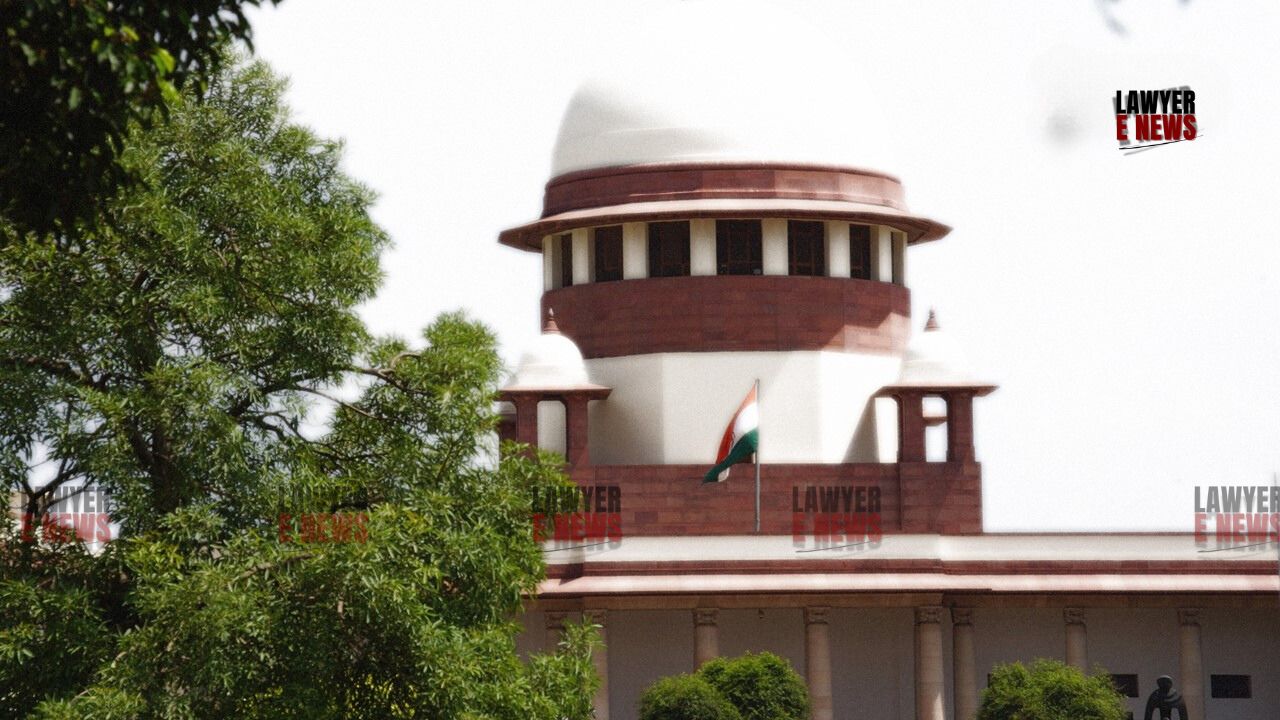-
by Admin
17 December 2025 10:13 AM



In a Significant judgement, On October 23, 2024, the Supreme Court of India, comprising Justice Abhay S. Oka and Justice Ujjal Bhuyan, dismissed an appeal filed by Manish Kumar Rai, an Artificer III in the Indian Navy, challenging the denial of grade pay parity between Artificers and non-technical Chief Petty Officers (CPOs) under the Sixth Central Pay Commission (CPC) recommendations. The Court upheld the Armed Forces Tribunal’s decision, affirming that the differentiation in grade pay between Artificers and Chief Petty Officers is justified and lawful based on hierarchical command structures and promotional pathways.
"Hierarchy and Responsibility Justify Pay Disparity," Holds Supreme Court
The central issue in the appeal was the discrepancy in grade pay between technical Artificers (Class I, II, and III) and non-technical Chief Petty Officers under the Sixth CPC. While Chief Petty Officers (CPOs) were awarded a grade pay of Rs. 4200, Artificers of Class I, II, and III were granted a lower grade pay of Rs. 3400, despite having comparable technical qualifications and responsibilities.
The appellant, Manish Kumar Rai, argued that this pay disparity was discriminatory, as Navy Instructions No. 2/S/96 and various other regulations equated the rank of Artificer III with that of a Chief Petty Officer for seniority purposes. He contended that this relative rank equivalency warranted equal grade pay for Artificers I to III and non-technical CPOs. However, the Supreme Court rejected this argument, emphasizing the importance of operational hierarchy and the distinct promotional avenues available to the two categories.
The appeal arose from a grievance filed by Manish Kumar Rai, who was serving as an Artificer III in the Indian Navy. He filed a writ petition before the Bombay High Court, contesting the denial of grade pay parity after the implementation of the Sixth Central Pay Commission. His petition was later transferred to the Armed Forces Tribunal (AFT) following its establishment.
The appellant argued that, according to Navy Instructions and Regulation 247 of the Indian Navy, Artificers III, II, and I held relative ranks equivalent to Chief Petty Officers. Despite this equivalence, the government denied them the same grade pay as their non-technical counterparts. The Sixth CPC placed Artificers I to III in the S-9 pay scale but granted them a grade pay of Rs. 3400 instead of Rs. 4200, which was given to non-technical Chief Petty Officers.
The appellant’s counsel argued that the relative rank equivalency between Artificers I to III and Chief Petty Officers, as provided by Navy Instructions and Regulation 247, justified equal grade pay. It was further contended that the Speaking Order issued by the Navy in April 2009, which denied grade pay parity, was flawed. The appellant also relied on Navy Orders and past judgments to bolster his claim that Artificers of Class III and above should receive equal treatment in terms of pay.
In response, the Additional Solicitor General (ASG), representing the Union of India, argued that the Chief Artificer was a promotional post for Artificers I to III, and therefore, they could not receive the same grade pay as Chief Petty Officers. The ASG emphasized that Artificers III to I work under the command of the Chief Artificer, and the pay structure reflects the promotional hierarchy. She also highlighted that the grade pay structure was carefully designed, with Artificers I to III placed between Artificer IV and Chief Artificer in terms of pay.
The Court carefully analyzed Regulation 247 of the Indian Navy, which outlines the hierarchical command structure of sailors, including Artificers and Chief Petty Officers. The Court noted that Chief Artificers hold command over Artificers I to III and that while Artificers I to III may have relative rank equivalency with Chief Petty Officers for seniority purposes, this equivalency does not extend to command and operational responsibilities.
Navy Order 100/67, relied upon by the appellant, was also examined. The Court pointed out that this order only addressed seniority equivalency between Artificers and Chief Petty Officers for specific purposes and did not imply automatic pay parity. The Speaking Order of 2009 was cited, clarifying that Artificers I to III could not be directly promoted to higher ranks like Master Chief Artificer, unlike Chief Petty Officers, further justifying the difference in grade pay.
The Court held that the promotional pathways for Artificers and Chief Petty Officers differ significantly, with Artificers I to III eligible for promotion to Chief Artificer, while Chief Petty Officers could advance to Master Chief Petty Officer. This difference in promotion opportunities was a valid reason for the pay disparity.
No Illegality or Discrimination in Pay Structure
The Supreme Court concluded that the grade pay structure of Artificers I to III, positioned between Artificer IV and Chief Artificer, was neither illegal nor arbitrary. The Court emphasized that while Artificers I to III are granted a grade pay higher than Artificer IV, they are justifiably awarded a lower grade pay compared to Chief Petty Officers and Chief Artificers.
The Court also rejected the appellant’s reliance on previous judgments and Navy Orders, affirming that those decisions did not establish an entitlement to equal grade pay for Artificers I to III with Chief Petty Officers.
The Supreme Court dismissed the appeal, affirming the decision of the Armed Forces Tribunal. It held that there was no merit in the appellant’s claim for grade pay parity with Chief Petty Officers and concluded that the differentiation in pay was justified by the hierarchical command structure and the distinct promotional avenues available to Artificers and Chief Petty Officers.
Key Takeaways
Operational Hierarchy: The Court emphasized that the difference in pay between Artificers and Chief Petty Officers is justified by the hierarchical command structure in the Navy, where Chief Artificers command Artificers I to III.
Promotion Pathways: The decision reaffirmed that Chief Artificers and Chief Petty Officers have different promotion opportunities, justifying the grade pay disparity.
Legal Framework: The Court concluded that the pay structure under the Sixth Central Pay Commission and Navy Regulations was lawful and non-discriminatory.
The Civil Appeal Nos. 6886-6887 of 2011 were thus dismissed, putting an end to the long-standing litigation regarding the pay disparity between Artificers and Chief Petty Officers in the Indian Navy.
Date of Decision: October 23, 2024
Manish Kumar Rai v. Union of India & Ors.
